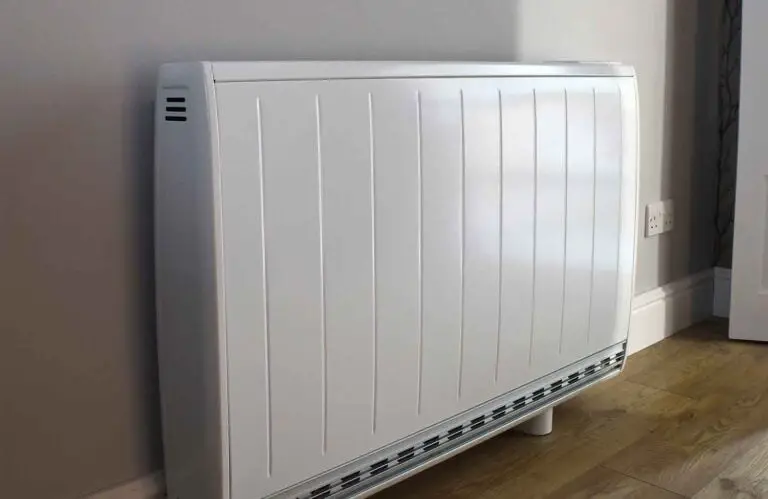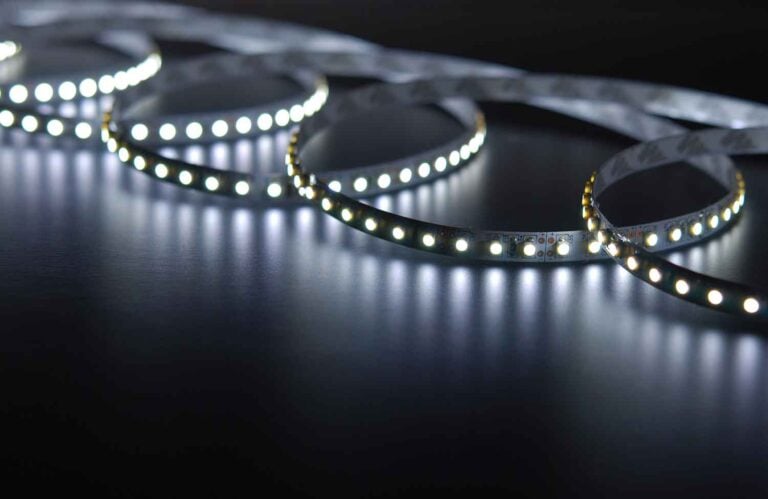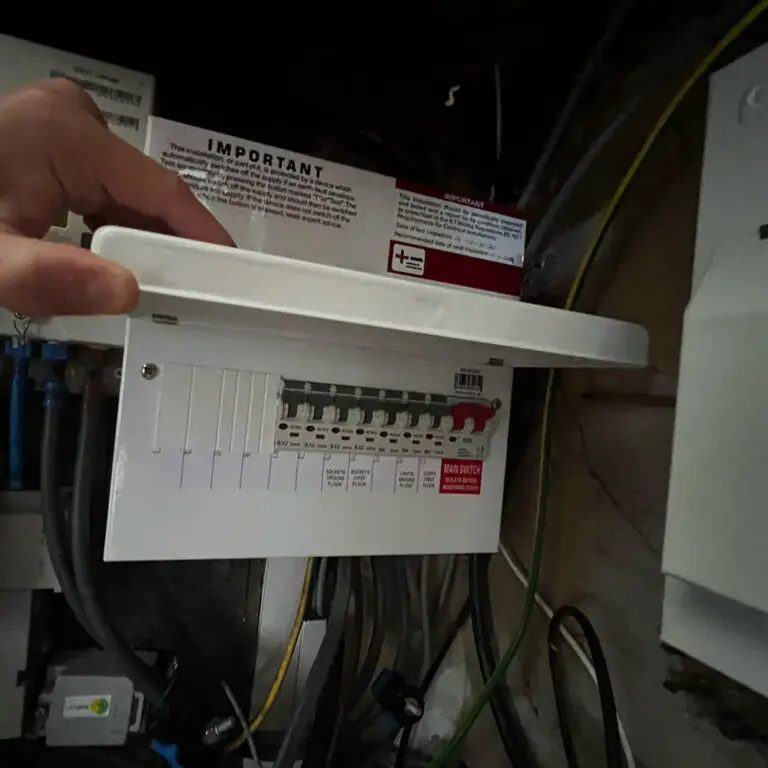Does the Neutral Wire Carry Current?
When discussing electrical wiring, the question often arises: “Does the neutral wire carry current?” It’s essential to understand the role of each wire in an electrical circuit to ensure the safe and efficient operation of devices and appliances. The neutral wire plays a crucial part in completing the circuit, as it serves as a return path for the electric current flowing through the live wire.
In single-phase power systems, the neutral wire does indeed carry current. It should carry the same amount of current as the live wire, functioning as a balance for the current flow. In contrast, a three-phase power setup evenly distributes the current between the three phases, effectively eliminating the need for a neutral wire to balance the system.
Key Takeaways
- The neutral wire carries current and serves as a return path for the electrical circuit
- In single-phase power systems, the neutral wire should carry the same current as the live wire
- Three-phase power systems typically do not require a neutral wire, as the current is evenly balanced among the three phases.
Fundamentals of Electrical Current
In an electrical circuit, there are three main components: the hot wire, the neutral wire, and the ground wire. The hot wire carries the electric current from the power source to your appliances, while the neutral wire serves as a return path for the current. It is essential to understand that the neutral wire does carry current.
When you connect an electrical appliance to a power source, it completes the circuit, and electrical current flows through the hot wire to the device and then returns to the source through the neutral wire. The balanced flow of current ensures the safe and efficient operation of the electrical system. This process repeats when you turn on any device.
An essential feature of the neutral wire is that it has a similar voltage to the ground, which helps maintain the stability of the circuit. Moreover, the neutral wire is connected to the grounding wire to provide a complete path for the current to return to the ground in case of any fault.
To summarise, the fundamentals of electrical current involve the flow of current through the hot wire, the neutral wire, and the ground wire. The neutral wire carries the current back to the power source, maintaining balance and stability in the circuit. It is a crucial component for the safe and efficient functioning of your electrical system.
Role of the Neutral Wire
The neutral wire plays a crucial role in electrical circuits, providing a return path for the current supplied by the hot wire. In household electrical systems, there are typically three wires – live, neutral, and earth. While the live wire carries the electrical current from the power source, the neutral wire serves as a balance for the current flowing in the circuit.
A common misconception is that the neutral wire does not carry any current. In fact, it does carry current, but its primary purpose is not to handle the full load current. Rather, the neutral wire helps maintain stability and safety in the circuit by providing a pathway for the electrical current to return to the power source.
To further clarify the role of the neutral wire, it is essential to understand that in an alternating current (AC) system, the direction of the current rapidly switches between positive and negative, creating a continuous cycle of energy flow. This means that both the live and neutral wires carry current, albeit in opposite directions.
In cases where an imbalance occurs due to excess load or a fault in the system, the neutral wire plays a vital role in preventing hazards. By being connected to the ground wire, it ensures that any excess current or charge is safely diverted to the earth, mitigating the risk of electrical shock or fire.
In summary, the neutral wire is an integral component of electrical circuits. It ensures balanced current flow and enhances overall safety by providing a return path for electrical current and acting as a safeguard against potential hazards. With a clearer understanding of the neutral wire’s role, you can better appreciate the importance of proper wiring and electrical safety in your home.
Current in the Neutral Wire
In a single-phase electrical system, the neutral wire carries current. It serves as a return path for the circuit, completing it and ensuring that the current flows efficiently. The neutral wire is essential for balancing the current in the circuit, as it should carry the same current as the hot wire.
In a three-phase setup, the current is evenly distributed across the three phases. This eliminates the need for a neutral wire, which is only used in single-phase systems. A properly functioning electrical circuit will have the currents in the hot and neutral wires balanced, enhancing the efficiency of the system.
It is essential to remember that while the neutral wire carries current, it should not pose the same risk of electrical shock as the live wire. However, you must always exercise caution when working with electrical systems and ensure that wiring is done correctly to prevent any potential hazards.
Remember to adhere to safety procedures and guidelines when working around electricity. If you ever feel unsure about what you are doing, consult a professional electrician to avoid any possible accidents or damage to your electrical system.
Neutral Wire in Single Phase Power Systems
In single-phase power systems, the neutral wire plays a crucial role in distributing electricity. With a single-phase setup, you need both the phase and neutral wire to ensure proper electricity distribution. In this system, the neutral wire carries the same current as the hot (live) wire.
Knowing the function of the neutral wire in a single-phase power system is vital for electrical safety. It acts as a return path for the current that your appliances and equipment use. The neutral wire carries this current back to the power supply, completing the electrical circuit.
In the UK, the neutral wire is commonly identified by a blue insulation cover. It’s essential to understand your home’s wiring, especially when doing installations or repairs. Mixing up the wires can lead to a dangerous situation, such as potential shocks or short circuits.
Another important aspect of single-phase power systems is the connection between the neutral wire and the earth ground at the power supply end. This grounding ensures the least possible voltage difference between any hot wire and the earth during normal operation. The result is a safer environment and reduced risk of electrical mishaps.
To sum up, the neutral wire in single-phase power systems carries current back to the power supply, completing the electrical circuit. It plays an essential role in providing safe and efficient electricity distribution throughout your home.
Neutral Wire in Three Phase Power Systems
In a three-phase power system, the neutral wire plays a crucial role in ensuring a safe and efficient transfer of electrical energy. Understanding the function of this wire will help you better comprehend the workings of a three-phase system.
The neutral wire is a non-energised conductor that carries current in an alternating current (AC) system. It remains non-energised because it is not directly connected to any active energy source from the main incoming service; that is the job of the line conductor. The primary function of the neutral wire is to balance the phases in the system and provide a return path for the currents of each phase.
In a balanced three-phase system, no current flows through the neutral wire. However, real-world electrical power distribution systems are seldom perfectly symmetrical and balanced. Consequently, there will be some current flowing through the neutral wire. The amount of current on the neutral conductor depends on the level of imbalance between the three phases.
Another important aspect of the neutral wire in a three-phase power system is voltage. While the neutral conductor does not have an absolute value of voltage, there are voltage differences present. This plays a significant role in ensuring a smooth flow of electricity and maintaining the overall stability of the system.
To summarise, the neutral wire in a three-phase power system is crucial for balancing the phases, providing a return path for currents, and managing voltage differences. By understanding its role and functions, you can ensure a safer and more efficient electrical power distribution system.
Safety Considerations
When discussing the neutral wire and its role in carrying current, it is crucial to consider safety aspects. The neutral wire completes the circuit and carries current away from the appliance at low or zero voltage. However, it is important to note that the neutral wire is not entirely safe to touch.
In a properly functioning electrical system, the neutral wire should be at most only a few volts away from the ground. This means that if everything is working correctly, touching the neutral wire would not result in a potentially fatal electric shock. Nevertheless, there are circumstances when this is not the case.
A significant safety risk arises if there is a break in the neutral line between the point of contact and where it is connected back to the ground. In such cases, the neutral wire can be driven to the full line voltage, making it dangerous to touch. It is always better to treat the neutral wire with caution and assume it is live to avoid potential accidents.
Additionally, it is vital to remember that electrical safety in your home relies on multiple layers of protection. Fuses provide a built-in fail-safe for electrical circuits, containing a thin wire that melts if the current gets too high, breaking the circuit and preventing further damage caused by electrical faults.
In summary, while the neutral wire does carry current, it is essential to be aware of the potential safety risks involved when working with electrical systems. Always exercise caution and consider professional assistance if you are unsure about any aspects of electrical safety.
Misconceptions About Neutral Wires
One common misconception about neutral wires is that they are “dead” wires that don’t carry current. However, this is not always the case. The neutral wire can carry current under certain circumstances, depending on the specific design of the electrical system.
You might be surprised to learn that in most electrical circuits, the hot and neutral wires carry the same amount of current. This is because they form a complete circuit, with current flowing from the panel to the appliance and back through the neutral wire. In some instances, such as in a ground fault circuit interrupter (GFCI) outlet or circuit breaker, the device operates by comparing the current through the hot and neutral wires.
Another mistaken belief is that neutral wires are always at 0 Volts. While this is typically true in a balanced electrical system, unbalanced current in multi-wire branch circuits can cause variations in voltage levels on the neutral wire.
It’s essential to understand that the difference between live and neutral wires is not related to fixed positive and negative terminals, as in alternating current (AC) systems, the current rapidly changes direction. In domestic electrical circuits, the live wire carries the current to the appliance, and the neutral wire completes the circuit by returning the unused current back to the panel.
Knowing these facts can help dispel common misconceptions about neutral wires and lead to a better understanding of electrical systems. Remember, while the neutral wire does play a role in returning current to the source, its function and behaviour may not always align with popular beliefs.
Neutral Wire and Earth Ground Difference
The neutral wire and earth ground are often misunderstood, but they serve distinct purposes in electrical circuitry. In this section, we will briefly discuss their differences and roles in carrying current.
The neutral wire is the return current conductor for AC power circuits. It is a vital component in completing the electrical circuit, allowing the current to flow back to the source. During normal operation, the neutral wire carries the same amount of current as the live wire. You will typically find it connected to a neutral bus within panelboards or switchboards, and bonded to earth ground at specific points such as the electrical service entrance or transformers within the system.
On the other hand, the earth ground, or simply “ground,” acts as a safety connection, providing an additional return conductor for fault currents. It does not carry current during the normal operation of connected equipment. Instead, it offers a low resistance path to the ground in the event of a fault, such as a short circuit or a live wire touching a metal casing. This helps prevent electric shock and other hazards by diverting excess current safely to the ground.
It’s essential to understand that while the neutral and earth ground are connected together at specific points, such as power generation plants, they are still separate entities serving distinct purposes. The neutral wire is part of the functional electrical circuit, while the earth ground serves as a critical safety mechanism.




